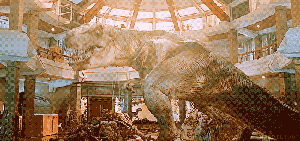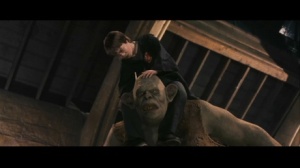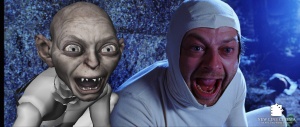The development of digital and visual effects in films has progressed drastically through the years. Stephen Prince explains in Digital Visual Effects in Cinema how filmmakers have used technology to create new worlds and characters that were once unimaginable to recreate on film. Within the first chapter of Prince’s book, he explains how Terminator 2: Judgment Day, released in 1991, was the first successful blockbuster to implement the use of digital effects, but that Stephen Spielberg’s Jurassic Park was the first example that demonstrated the potential of these special effects. “This aura was enticing, alluring—it promised viewers a radically new experience, and dinosaurs were the perfect vehicle for launching an era of unprecedentedly vivid visual effects.” (Prince, 25) Spectators were now able to see what it would be like if dinosaurs still roamed the earth, as Spielberg promoted the film with images of the life-like dinosaurs that were used within the film, luring spectators of all ages to view the exciting and imaginative imagery.
Prince explains how Spielberg used both animatronic and computer animation to create the most vivid and convincing images of dinosaurs on screen. I personally found it incredibly interesting to learn exactly how Spielberg was able to accomplish this, as there are many cases where we see both the animatronic and the CGI dinosaur within the same shot. Due to the lack of technology in the early 90s, filmmakers had to come up with ways to view the most realistic dinosaur, using camera movements as a way to allow a seamless transition between the large animatronic T-Rex head or feet, to the full body CGI T-Rex that continues through the rest of the frame. Prince breaks down two specific scenes in the film, one being the first time we see the T-Rex and the other involving velociraptors in the kitchen with the two kids.  These breakdowns explain exactly when Spielberg used an animatronic piece, puppets, costumes, or CGI. All of which are still tools used today. For example, Harry Potter and the Sorcerer’s Stone uses both CGI and Animatronics as well during the scene in which a troll breaks into Hogwarts and into the girl’s bathroom where Hermione is put in danger. The shots that show the troll in its entirety are done with CGI, however any shot that showed only segments of the troll, such as his feet or legs, are done with animatronics to provide the most life-like image, however, when the live-actors and the computer animated characters interact physically with one another, the live-actor will be digitally added so the two images and characters can be merged and manipulated to perform whatever action is wanted. This has its drawbacks; however, as it can sometimes be a lot clearer to the viewer as to when the live-actors become computer animations. For example, when Harry is riding around on the troll’s neck, it’s clear that Radcliffe’s character is animated as the movements would not only break his neck, but be very difficult to perform in a realistic manor.
These breakdowns explain exactly when Spielberg used an animatronic piece, puppets, costumes, or CGI. All of which are still tools used today. For example, Harry Potter and the Sorcerer’s Stone uses both CGI and Animatronics as well during the scene in which a troll breaks into Hogwarts and into the girl’s bathroom where Hermione is put in danger. The shots that show the troll in its entirety are done with CGI, however any shot that showed only segments of the troll, such as his feet or legs, are done with animatronics to provide the most life-like image, however, when the live-actors and the computer animated characters interact physically with one another, the live-actor will be digitally added so the two images and characters can be merged and manipulated to perform whatever action is wanted. This has its drawbacks; however, as it can sometimes be a lot clearer to the viewer as to when the live-actors become computer animations. For example, when Harry is riding around on the troll’s neck, it’s clear that Radcliffe’s character is animated as the movements would not only break his neck, but be very difficult to perform in a realistic manor.
One of the age old questions regarding this new developing technology is whether or not CGI will become advanced enough to replace live actors all together. I personally believe that this will never be the case, even though we will have the technology to do so. The main reason why I believe this is because no matter how many puppeteers or programs are implemented to create a character, it will never have the natural authenticity that a human being can bring to a role, whether it be a fictional creature or real life animal.
Andy Serkis is a prime example for his work with performance capture, a new technological art form based on CGI-assisted acting. This allows him the ability to fully act out a character that will then be visually altered to represent the image of that specific character. Serkis is most well known for his work as Gollum in The Lord of the Rings franchise, but continued on to play the role of King Kong in Peter Jackson’s 2005 remake. His ability to act with performance capture proved to be a significantly more authentic performance than with just computer imaging. His most recent work with performance capture is as the role of Ceaser in both Rise & Dawn of the Planet of the Apes (2011, 2014). This behind the scenes footage of Serkis on set of Rise of the Planet of the Apes shows exactly how his acting is translated into the image of a chimpanzee using performance capture and CGI.
Sources:
Prince, Stephen. Digital Visual Effects in Cinema: The Seduction of Reality. 232: Rutgers University Press, 2011. Print.


Leave a comment